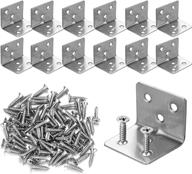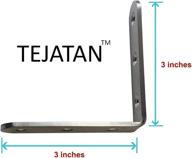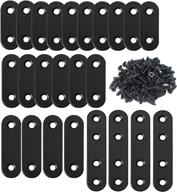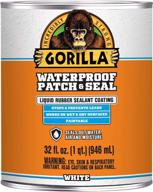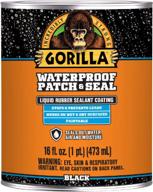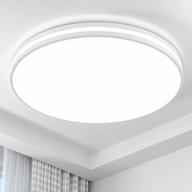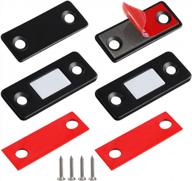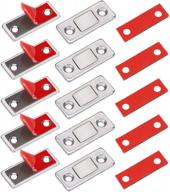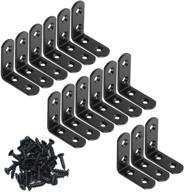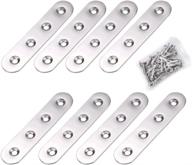Top products in 🦷 Braces
Straight Braces
Straight braces are a versatile type of brace used in construction, framing, and furniture making. They provide rigid support and reinforcement where needed. This article will discuss what straight braces are, their features and benefits, and how to properly install them.
What are Straight Braces?
Straight braces, also sometimes called flat braces, consist of elongated strips of rigid material with holes or slots at each end for fastening. They are designed to brace and reinforce between two surfaces that are parallel to each other. Some key features of straight braces include:
- Made of wood, metal, or plastic
- Flat, elongated rectangular shape
- Holes or slots at the ends for screws or bolts
- Commonly available in various lengths and widths
Benefits of Using Straight Braces
There are several benefits that make straight braces a popular choice:
- Simple design allows for easy installation between parallel surfaces
- Can handle heavy weight and force when installed properly
- Provide maximum lateral support and rigidity
- Cost effective bracing solution
- Can be used for temporary or permanent bracing needs
Straight Brace Materials
Straight braces are commonly constructed from these materials:
- Wood - plywood, oak, poplar are common woods used. Provides good rigidity.
- Metal - steel and aluminum braces provide maximum strength.
- Plastic - plastic polymers can be used as lighter duty straight braces.
How to Install Straight Braces
Installing straight braces properly is important to gain maximum support. Follow these steps:
- Determine length needed - measure between surfaces and allow extra space for fasteners.
- Mark location on both mounting surfaces, making sure they are precisely parallel.
- Drill pilot holes in mounting locations if using screws.
- Use bolts/screws to securely fasten brace using drill, wrench, etc.
- Check that brace is tightly secured and level.
| Fastener Type | When to Use |
|---|---|
| Screws | Wood surfaces |
| Bolts | Metal or heavy duty |
Another interesting products
Tips for Using Straight Braces
- Use braces in pairs for maximum support.
- Maintain finish to prevent rust/corrosion.
- Inspect periodically for damage or looseness.
- Replace damaged braces for safety.
Similar products
Conclusion
With their simple design and rigid bracing capabilities, straight braces are a versatile solution for reinforcing and stabilizing parallel surfaces. Following proper selection, installation, and maintenance practices allows you to gain the full benefits from straight braces in your projects.
Choosing the Right Brace
Selecting the optimal brace involves considering factors like the application, load capacity required, adjustability, and material. This article provides guidance on choosing the best brace for your needs.
Brace Applications
Common uses that require bracing include:
- Shelving
- Furniture
- Structural framing
- Construction projects
Consider the primary application to narrow suitable brace types and features.
Load Capacity
Determine the total weight load the braces must support. This helps choose braces with proper weight ratings.
- Light duty - up to 100 lbs
- Medium duty - 100 to 500 lbs
- Heavy duty - over 500 lbs
Brace Materials
Braces come in different material types:
- Wood - cost effective, provides good rigidity for light-medium loads.
- Steel - very high strength, best for heavy loads but more expensive.
- Aluminum - lightweight, corrosion resistant, good for medium loads.
- Plastic - low cost but only suitable for very light loads.
Brace Styles
Consider the style of brace needed for the application:
- Angle braces - L-shape, support between perpendicular surfaces.
- T braces - T-shape, support between perpendicular and parallel surfaces.
- Straight braces - support between two parallel surfaces.
- Corner braces - triangular, support for 90 degree joints.
Adjustability
Some braces allow adjustability:
- Fixed braces - non-adjustable length and angle.
- Adjustable braces - allow length or angle adjustments through slides, swivel joints, etc.
Adjustability provides more flexibility but cost is higher.
Brace Size
Standard brace sizes include:
- 3 inch
- 4 inch
- 6 inch
- 8 inch
Larger braces can handle more load. Make sure brace length spans entire mounting area.
Installation Hardware
Braces require hardware for installing onto surfaces:
- Wood screws
- Bolts/nuts
- Lag screws
Ensure the brace hardware matches the mounting materials.
Conclusion
Choosing the optimal brace requires evaluating factors like application, load capacity, style, materials, and adjustability. Properly matching a brace to your specific needs results in maximum performance and safety.
Consider Load Weight and Stress
Properly considering the load weight and stress is crucial when selecting the right type of brace. The brace must be rated to handle the demands of the application to avoid failures.
Load Types
The load on a brace can be:
- Static - Stationary weight that remains constant, like shelves holding books.
- Dynamic - Changing weight loads like people walking on a floor.
Weight Capacity
The brace must be rated for the total estimated weight load. For example:
- A shelf holding power tools may require medium or heavy duty braces rated for 100-500 lbs.
- A handrail bracket may only need a light duty brace rated under 100 lbs.
Load Distribution
Consider how the load is distributed across the braces:
- Concentrated loads place more stress on localized areas.
- Distributed loads spread the force more evenly.
Force Directions
The brace must withstand force from multiple directions:
- Shear - Forces parallel to the brace.
- Tension - Pulling forces along the brace's length.
- Compression - Forces pressing together across the brace.
- Torsion - Twisting forces.
Shock Loading
Sudden impact forces can multiply the stress. For example, heavy boxes dropped on a shelf.
Safety Factors
Size the brace's strength rating higher than the expected load as a safety factor. A 2x safety factor is commonly used.
Conclusion
Evaluating the types of loads, weigh capacities, force directions, and safety margins ensures selecting a brace that will withstand stress and avoid potential failures.
Choose Brace Material: Wood, Metal, or Plastic
Selecting the optimal material is key to getting the right strength, durability, and cost efficiency from a brace. Common brace materials include wood, metal, and plastic.
Wood Braces
Wood like pine, oak, or plywood is a traditional brace material providing:
- Good rigidity and compression strength
- Lightweight
- Easy to cut and install
- Lower cost than metal
Wood braces are well suited for:
- Light duty shelving and furniture
- Temporary bracing during construction
Metal Braces
Steel and aluminum braces offer advantages like:
- Very high strength and durability
- Ability to support very heavy loads
- Long service life
Metal is ideal for:
- Heavy duty shelving and structures
- High stress applications
- Permanent bracing
Plastic Braces
Reinforced plastic polymer braces provide:
- Corrosion resistance
- Light weight
- Low cost
Plastic is only suitable for:
- Very light duty such as crafts
- Temporary or low stress applications
Comparison
| Material | Strength | Cost |
|---|---|---|
| Wood | Medium | Low |
| Metal | High | Medium |
| Plastic | Low | Low |
Conclusion
The intended application and load capacity needed will dictate the best material choice for braces. Select wood, metal, or plastic based on the required strength, environment, and budget.
How Amazon Prime Benefits Regular Brace Buyers
For those who frequently purchase braces and brackets, an Amazon Prime membership can provide significant benefits and conveniences. Here are some of the key advantages Prime offers for regular brace buyers.
Free Two-Day Shipping
One of the main perks of Amazon Prime is free two-day shipping on eligible items. This allows you to get the braces you need quickly without paying extra shipping fees. No more waiting over a week for standard shipping!
Free One-Day and Same-Day Delivery
Amazon Prime also provides free one-day shipping on over 3 million items. For last minute projects, you can get braces delivered right away. Same-day delivery is even available in some areas.
Free Release-Date Delivery
When pre-ordering upcoming brace releases and new product launches, Prime members can get free release-date delivery so the items arrive on the exact day they are released.
Try Before You Buy
The Prime Wardrobe feature lets you try braces before committing to purchase them. This allows you to test fit and quality before deciding to keep or return.
Access to Lightning Deals
Prime members get 30 minute early access to Lightning Deals on braces. This lets you grab time-limited discounts before brace deals sell out.
Streamlined Reordering
With the save for later and subscribe and save features, reordering replacement and recurring use braces is quick and easy for Prime users.
Prime Customer Service
Get exclusive access to Prime customer service for faster responses and priority help with brace orders and delivery.
For frequent brace buyers, the shipping and access benefits provided by Prime can be well worth the membership fee.
What Are The Different Types Of Braces Available In The Market?
There are several types of braces available in the market. Here are the different types of braces:
- Metal braces: These are the most common type of braces and are made of high-grade stainless steel. They are smaller, more comfortable, and more attractive than before.
- Ceramic braces: These braces are made of clear, tooth-colored material and are more discreet and less visible than metal braces. They are popular among patients who want to straighten their teeth in a discreet and affordable way.
- Self-ligating braces: These braces use a slide mechanism to hold the archwire, which reduces the amount of pressure exerted on the teeth. They are more comfortable and require fewer adjustments than traditional braces.
- Lingual braces: These braces are placed behind the teeth and are the most specialized and least common orthodontic treatment. They are not noticeable esthetically but are difficult to brush and floss.
- Clear aligners: These are a braces alternative that uses a series of custom-made trays to straighten teeth over time. They are popular among patients who want to avoid the look of traditional braces.
- Iconix aesthetic braces: These braces use metal brackets made up of either gold or champagne-colored stainless steel, which mimic the natural color of teeth. They are less noticeable to others and are a great option for adults or anyone in the public sphere who may not want to draw attention to their orthodontic treatment.
- Clarity clear braces: These braces are made of clear ceramic material and are less noticeable than traditional metal braces. They are a great option for patients who want a more discreet treatment option.
What Are The Differences Between Traditional And Clear Braces?
Traditional braces and clear braces have some differences. Here are the main differences between traditional and clear braces:
Traditional braces:
Clear braces:
In summary, traditional braces are more suitable for those with a more significant level of crooked or misaligned teeth, while clear braces are more suitable for those who do not need extreme teeth movement or rotation. Clear braces are less noticeable than traditional metal braces, but they require more maintenance to keep their clear appearance.







